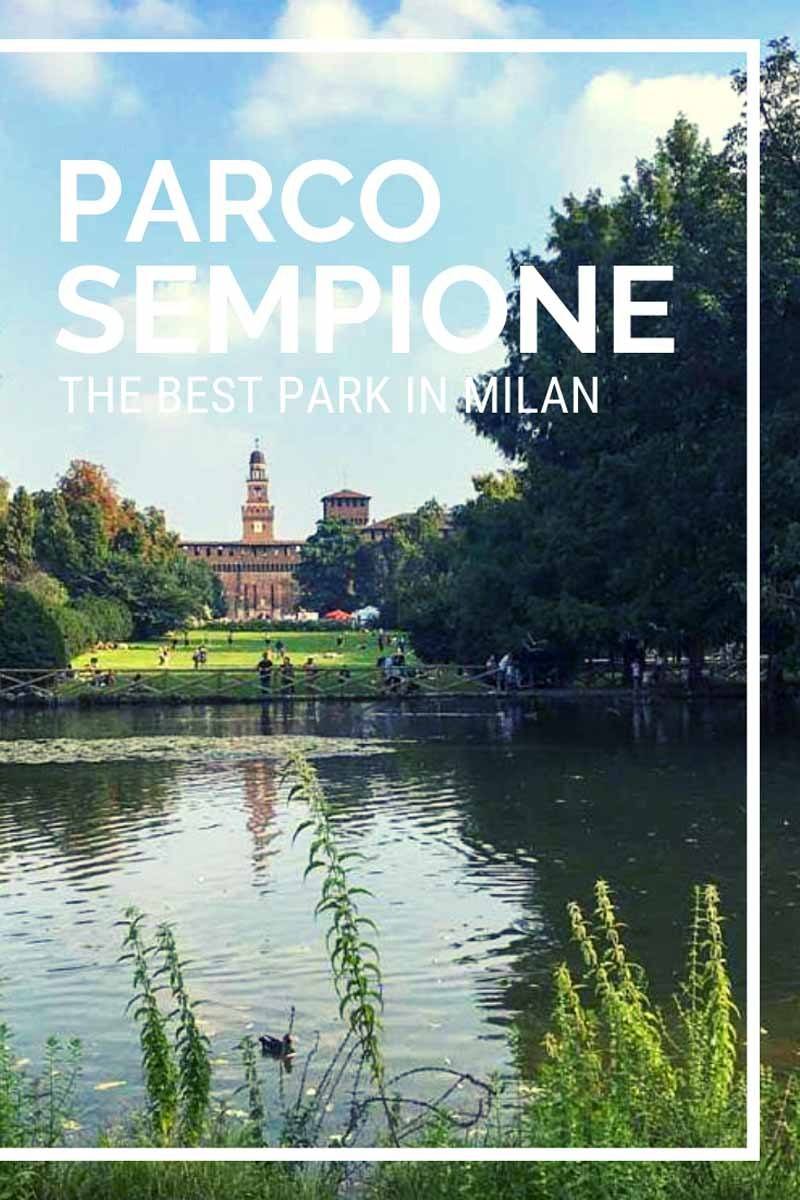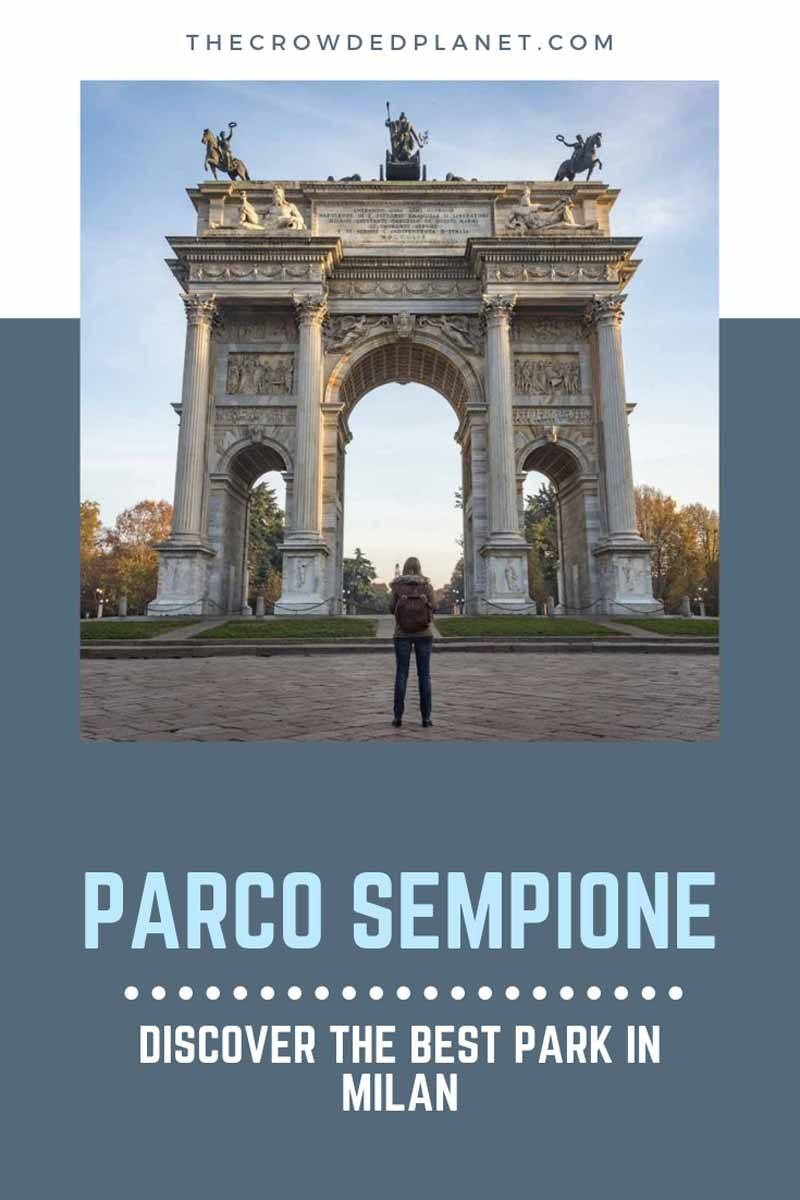Welcome to yet another #MondaysinMilan! Today we’ll tell you all about Parco Sempione, the most beautiful park in Milan! We’ve joined a tour with Guido Tour Sharing, a new website allowing travellers to share the services of a professional tour guide. Read on and explore Parco Sempione with us!
Parco Sempione and the Sforza Castle may well be the most underrated tourist attraction in Milan.
Most people visiting for just 24 hours or for a weekend in Milan often don’t bother checking out Milan’s former ducal residence, and the hunting grounds-turned-park just behind, heading straight for more famous sights like the Duomo or Last Supper instead.
I’m also guilty of that. Whenever I decide to head to the centre of Milan for a walk or a bike ride, I rarely make it to Parco Sempione. The park is home to some of my favourite places in the city, like the Acquario, mentioned in my article about free things to do in Milan, but I still don’t visit the area as often as I should.
Introducing Guido Tour Sharing
For this reason, I was more than happy to join the invitation to visit Parco Sempione with Guido Tour Sharing.
You may be wondering what tour sharing is – before I explain, let me give you some background information. Professional tour guides in Italy have to pass a very strict exam to get their license. Nowadays, guide licenses are valid for the whole of Italy, but up until a few years ago, they were only given for a specific area – say Milan and surroundings.
This was to ensure that tour guides really, really know their stuff. As a result, they tend to charge prices that take their studies and experience into consideration – translating into a minimum of €50 per hour (usually), which can easily turn into a few hundred euro for a full day.
As a result, exploring Italian cities with a professional tour guide can easily blow one’s budget. This is where Guido Tour Sharing comes in – it was created for travellers to meet and enjoy a guided tour all together, sharing the fees of a professional guide.
If you log onto the Guido Tour Sharing website, you can choose the city you wish to visit, see what tours are available and how many people have signed up so far, which determines the final price.
You’ll find ‘traditional’ tours, and more unusual offers – like the one we opted form called ‘What Milan is Made Of’, discovering Parco Sempione and surrounds through architecture and building materials, or another wonderful tour of La Scala Museum focusing on the most famous divas in the history of opera.
What to see in (and Around) Parco Sempione
The Fountain in Piazza Castello
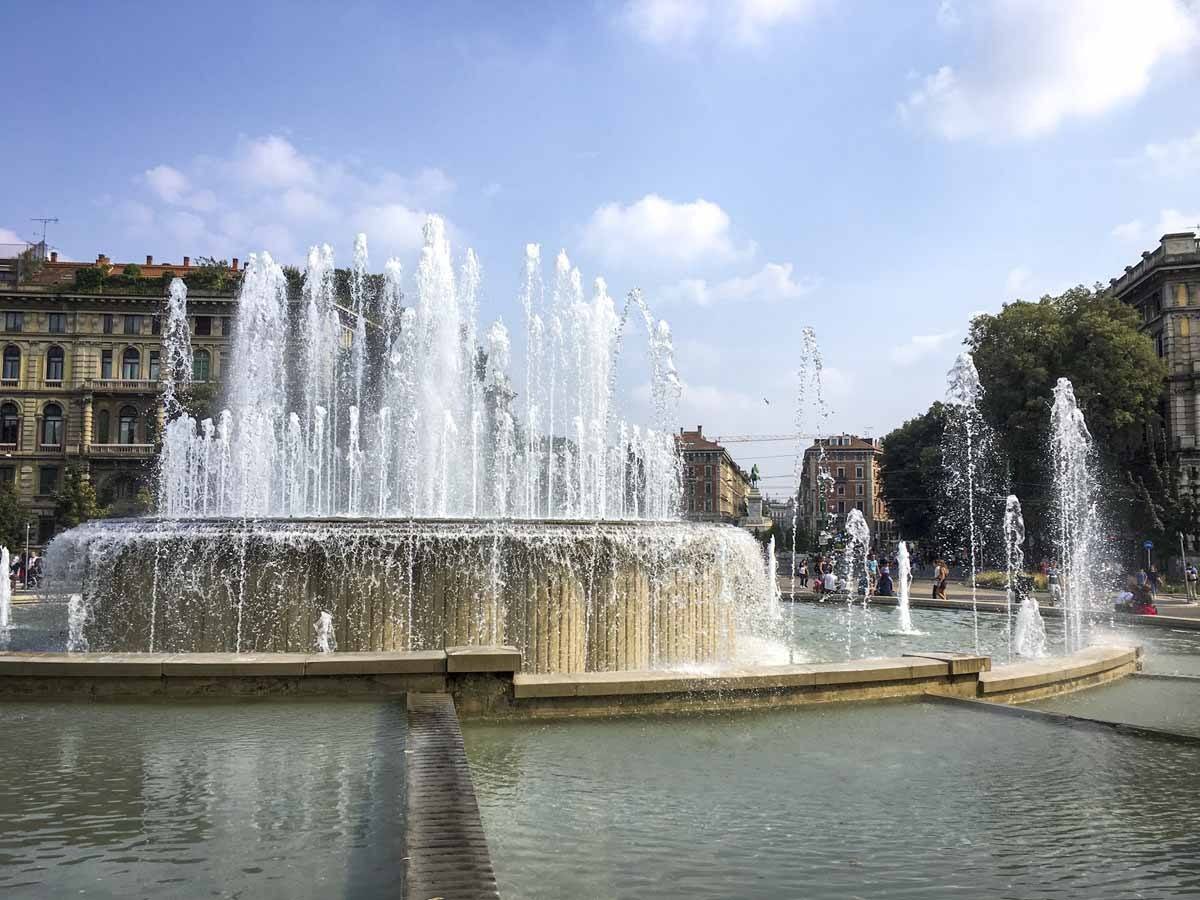
Our tour started in Piazza Castello, right opposite the entrance to Sforza Castle and Parco Sempione. Yet, the first point of interest was just outside – the Fountain of Piazza Castello, also colloquially known in Milan as ‘Torta degli Sposi’ (wedding cake).
Our guide Fabio, an architect and music lover, shared some anecdotes about the fountain – it’s crazy to think that I walked past it hundreds of times, and I had no idea of where it came from!
The fountain was built in 1936 to celebrate one of Mussolini’s visits to Milan. At first glance, it looks like gleaming white marble was used as a building material – in fact, the fountain is made of pietra di Vicenza, rich in calcium carbonate, cheaper and easier to work with than marble.
The Fountain of Piazza Castello is also the subject of a popular urban myth. After dominating the square until the Sixties, it was demolished to make room for a metropolitana (underground) construction site. The fountain ‘disappeared’ for over 30 years – after former prime minister Bettino Craxi escaped Italy to avoid prosecution, it was rumoured that it had been stolen for his villa in Hammamet, Tunisia.
In fact, the fountain was being kept in a warehouse. In 1999, it was installed again in Piazza Castello, where it can be seen in function every day.
Sforza Castle

Parco Sempione extends just behind the Sforza Castle, first built as a residence for the rulers of Milan and later turned into a military garrison. The park used to be a hunting ground for the Sforza family, who ruled the city between 1450 and 1535, then it was turned into agricultural grounds and used for military barracks, before finally becoming a park in the early 19th century.
The castle was built over an existing 14th century fortification known as Castello di Porta Giovia, after the Roman entrance gate to the city. The Sforza were the ones who gave the castle the look it has to this day, with a tall entrance tower (known as ‘Torre del Filarete’, which was destroyed by a fire in the 16th century) and two squat cylindrical towers on either side of the façade.
For the Sforza, extending the castle was a way to display their power over the city – for this reason, the castle still bears their name. Fabio told us this as he led us through the entrance gate, pointing out some of the original brickwork dating back to the 14th century.
The building was heavily restored between the late 19th and early 20th century by architect Luca Beltrami, who rebuilt the Torre del Filarete and other original features, taking the castle back to its looks during the Sforza heyday.
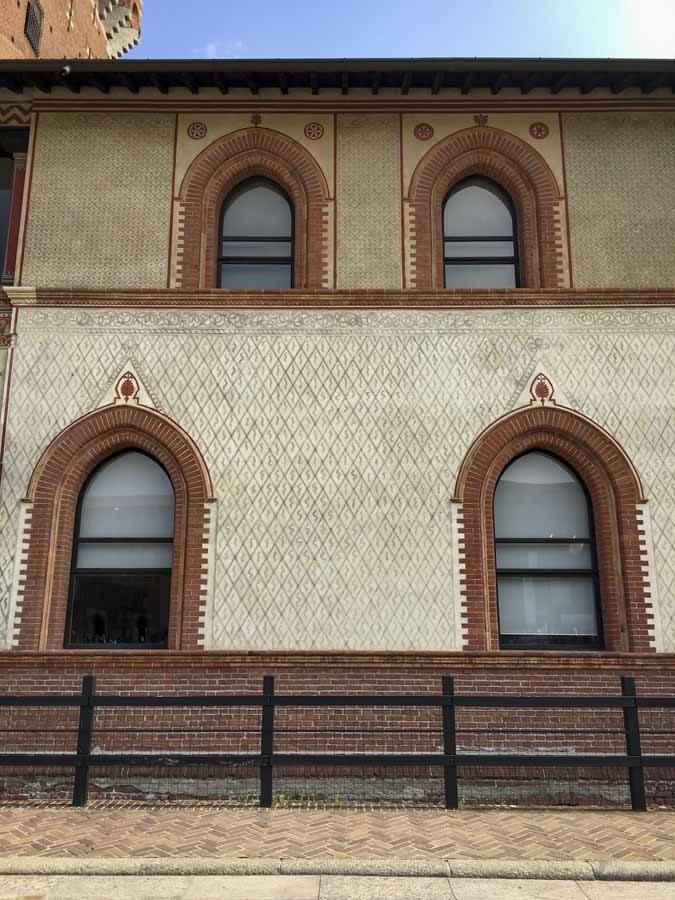
The castle was mainly constructed with bricks, like most buildings in the Po Valley. The distance of the city from quarries and mountains meant that bricks were, quite simply, the most convenient building material.
On the way through the castle courtyards towards Parco Sempione, Fabio showed us something I had never noticed before – walls decorated with the 15th century graffito technique, obtained by giving two coats of paint of two different colours, and then ‘scratching’ the top coating in patters to reveal the bottom one.
The Acquario

Leaving the castle behind, we started walking towards the Acquario Civico, one of Milan’s most famous buildings in Liberty style, Milan’s very own version of Art Nouveau.
Everyone knows the 2015 Milan Expo, but not many are aware that this was in fact the second Expo to take place in the city. The 1906 Expo was held in Parco Sempione, and a number of buildings and pavilions were built for the event – there was even a hot air balloon ‘airport’, and the replica of a street from Old Cairo.
Sadly, all structures were knocked down following the Expo, except the Acquario.
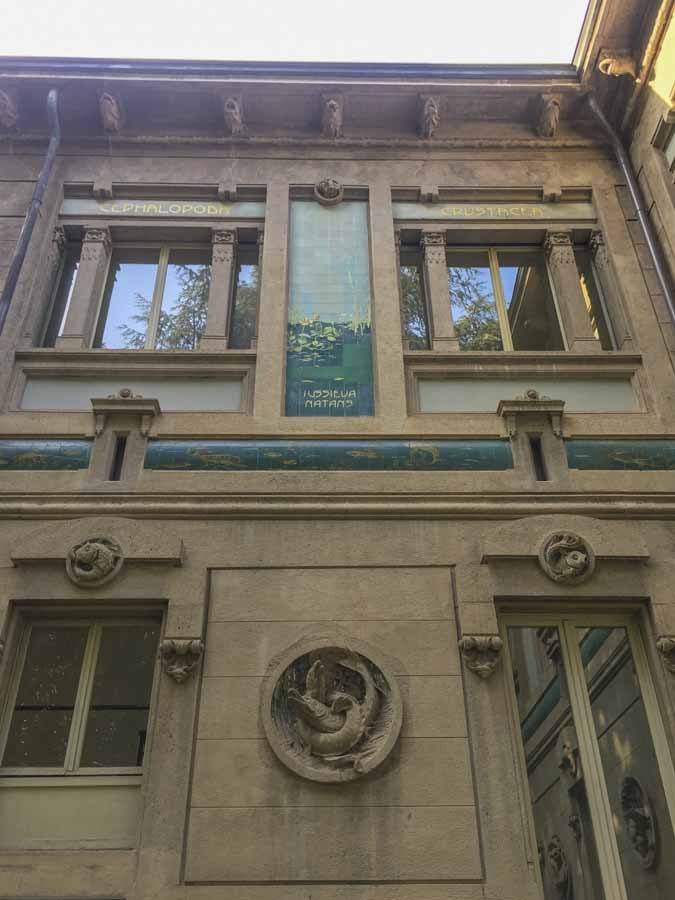
Two techniques were used to decorate the façade – printed concrete, used to create wonderful sculptures of marine animals, and painted tiles, made by renowned Italian ceramic company Richard Ginori.
If you have time, we recommend visiting the Acquario. Don’t expect one of those big affairs with penguins and orcas – it’s first and foremost a research station, and it aims to showcase the Italian freshwater and marine environments, with particular attention given to endangered species.
Arena Civica
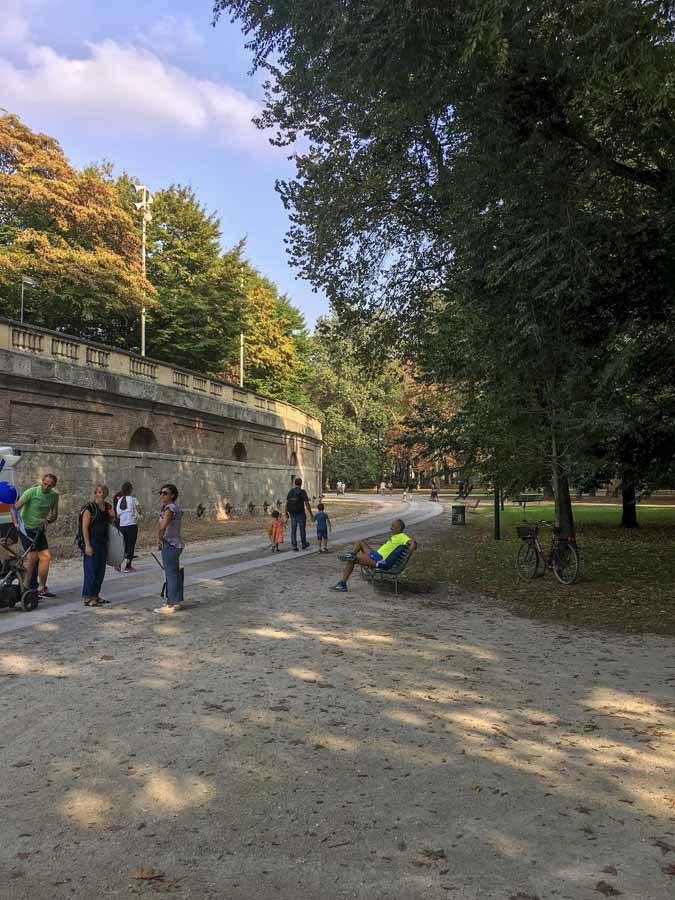
After the Acquario, we headed to the Arena Civica, Milan’s first football stadium until San Siro was built in the 1920s. However, the Arena (as it is known in Milan) was not built to be a stadium – rather, it was part of Napoleon’s vision for Milan, which was to include public baths, a Pantheon, a national museum, residential and shopping streets, plus several Neoclassical buildings.
The aim was creating a new, secular ‘city centre’, away from the Duomo, focusing on business and trade. Only three features of Napoleon’s grandiose plan to create a ‘Milanese Paris’ came to light – the Arena, the Arco della Pace, and Foro Bonaparte, a curved tree-lined boulevard connecting Piazza Castello and Cadorna station, intended to be residential street for wealthy Milanese (and it is still exactly that).
The Arena was built in Neoclassical style by architect Luigi Canonica – it was inaugurated in 1806, and Napoleon himself attended the opening. A range of materials were used, including bricks, pink granite, and Ceppo di Gré, a grey-blue stone quarried from one specific mountain near Lake Iseo. This all sounds rather expensive, especially for a practical man like Napoleon – as a result, some of the building materials used for the arena were salvaged from the 15th century ruined castle in Trezzo d’Adda.
Ponte delle Sirenette

Now it’s time to go and visit the Ghisini sisters, said Fabio, as he led us towards the centre of Parco Sempione, between trees and ornamental lakes.
Once again, I thought how little I knew about the park. What sisters? Was there a shop run by two elderly sisters that I had never heard of?
All mysteries were revealed when we stopped by the Ponte delle Sirenette (Mermaids Bridge), connecting the two sides of a small lake. The four ‘Ghisini Sisters’ are the mermaids decorating the pillars on either side of the bridge – the nickname ‘ghisini’ comes from ghisa (cast iron), the material in which they had originally been built.
The bridge wasn’t originally intended to be placed in Parco Sempione, but on one of the Navigli (canals) in the centre of Milan. After the canal was covered over in the 1930s, the bridge was moved to the park. One of the ‘sisters’ was damaged by WW2 bombs, and another was stolen in 1948 – two replicas were added a few years later, but this time they were made out of bronze rather than cast iron.
Arco della Pace
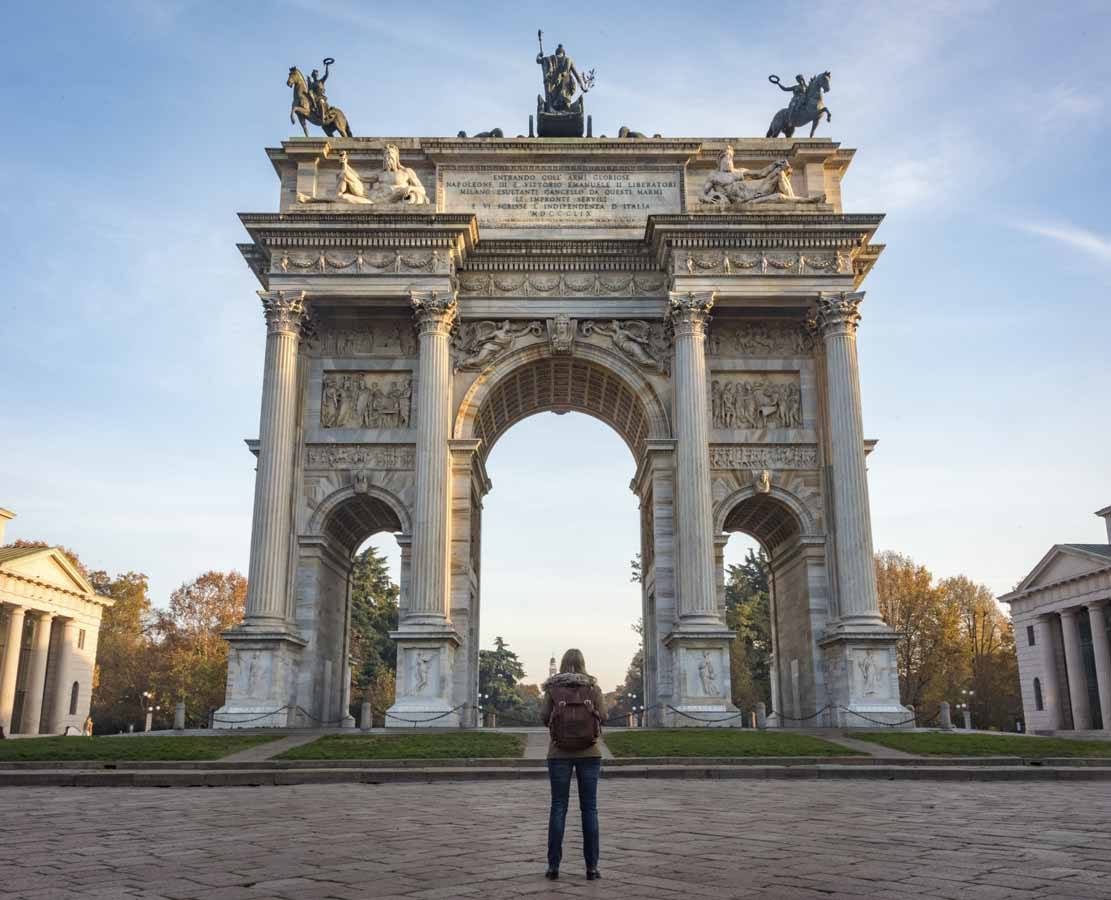
Leaving the ‘sisters’ behind, we headed towards the Arco della Pace, the final stop on our tour of Parco Sempione with Guido Tour Sharing. Along the way, we quickly stopped outside the gates of the Palazzo dell’Arte, headquarters of the Milan Triennale and of the city’s Design Museum.
Peering through the gate, we saw Giorgio De Chirico’s famous sculpture ‘Fontana dei Bagni Misteriosi’, inspired by the artist’s childhood spent on a Greek island.
A short walk later, we reached Arco della Pace, Milan’s very own version of the Arc de Triomphe. It was built to celebrate the victory of the French (then ruling over Milan) against the Prussian army in Jena in 1806, and it was decided to use the precious pink Candoglia marble, the same material as the Duomo.
However, construction of this triumphal arch took longer than expected, and by the time it was done thirty years later, Milan had fallen into Austrian hands. The Austrians left the arch as it was, and only changed the position of the bronze horses located on the top – so that their behind, rather than their front, would face towards France.
The Arco della Pace also marks the start of Corso Sempione, a residential street that was first conceived to be a sort of Champs Elysees. Fabio invited us to look back to where we came from – in a straight line, we could see the Arco della Pace, Parco Sempione, and the Sforza Castle, just like in Paris you can see the Louvre, Jardin de Tuileries and Champs Elysees, before finally getting to the Arc de Triomphe.
Who knew my own hometown had so much in common with Paris!
How to Get to Parco Sempione

Parco Sempione is the largest park in the centre of Milan, with various access points depending on where you want to start your visit.
If you want to visit the Sforza Castle, get off at Cairoli M1 and walk straight ahead – you simply can’t miss it!
For the Acquario, the closest metro stop is Lanza M2, whereas for the Arena it’s Moscova M2.
To reach Arco della Pace, the easiest way is getting tram 1 from the Duomo, or tram 10 from Stazione Centrale. Both these lines usually employ vintage tram cars, making for some great pictures!
When to Visit Parco Sempione

Parco Sempione can be visited year round, with each season offering different experiences.
In spring and summer, the park is popular for picnics and for people wanting to exercise outdoors, especially runners. Autumn is probably the best time for pictures, as the trees change colour, and winter is great when it snows, but it rarely does in Milan. Otherwise, it’s the quietest time in the park!
If you’re visiting during the weekend and it’s sunny, be aware there will be many people all over Parco Sempione. After all, it’s a real local favourite!
This post was written in collaboration with Guido Tour Sharing. We would like to thank our awesome guide Fabio!
Pin it for later?
